From Big Tom to Brexit Mockumentaries: A new digital archive captures the artistic legacy of the Irish border
A new digital archive capturing the artistic legacy of the Irish border launched as part of Trinity College Dublin’s Arts and Humanities Research Festival on Monday, September 23.
Ireland’s Border Culture is an open-access digital archive of literature, visual art, memoir and film of Ireland’s ‘cultural borderscape.’

One hundred and seventy examples of life as lived in the border counties – from 1921 to the present day – are featured in the archive including Big Tom’s “Back to Castleblayney,” Lisa O’Neill’s “No Train To Cavan,” and Spike Milligan’s Puckoon a humorous take on the Boundary Commission tasked with drawing up the border. The Pièce de résistance being a “United Ireland Tea Towel” sewing kit by Rita Duffy.
The project, a collaboration between Trinity Long Room Hub and the Seamus Heaney Centre, Queen’s University Belfast, is funded under the Higher Education Authority’s North-South Shared Island research program.
The archive includes extracts from numerous writers, including poets Louis MacNeice, Ciaran Carson, Paul Muldoon, Eiléan ni Chuilleanáin, and novelists Pat McCabe, Jennifer Johnston, John McGahern, and Michelle Gallon.
In addition to Country & Western favorite, Big Tom and The Mainliners, Dundalk punk poet Jinx Lennon and the 1964 Clones Fleadh Cheoil are included.
Visual arts is also well represented including, Gretta Bowen’s 1940s faux naif painting “The Customs Examination” and work by Desmond Reid, Mairead McClean, and others.
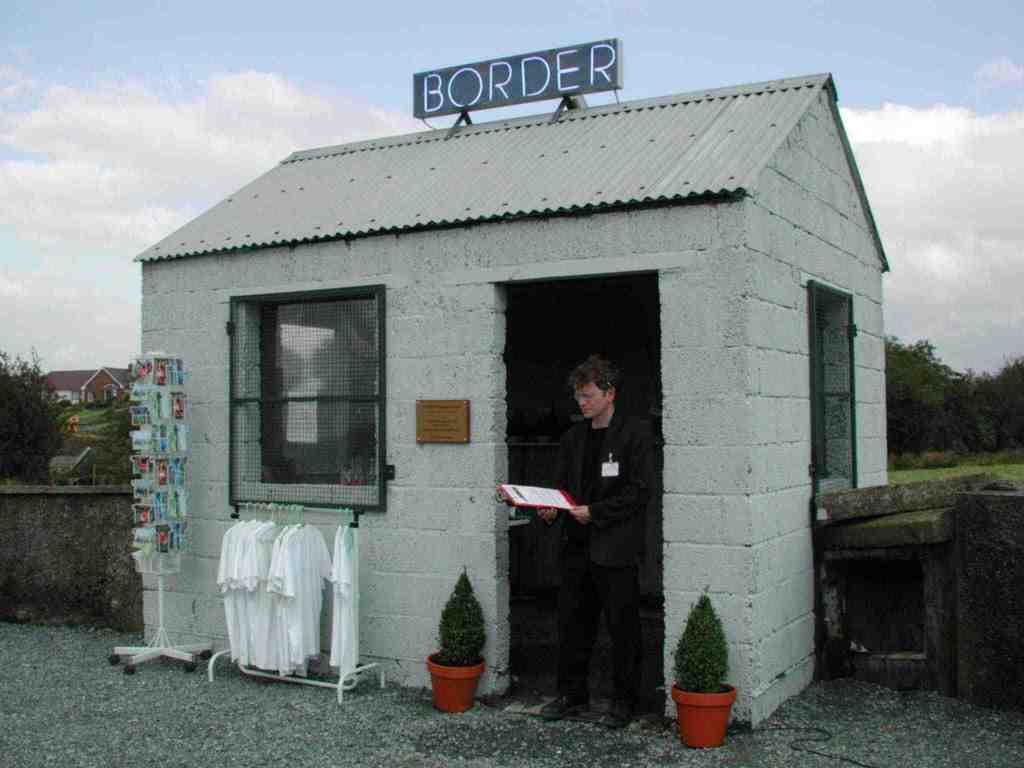
Much of the curation was undertaken by the project’s postdoctoral researcher Dr. Orla Fitzpatrick. A specialist in Irish visual culture, she included photography pieces such as Brian Newman’s evocative sequence on forgotten borderland Orange Lodges, and Kate Nolan’s brooding shots of Donegal town Pettigo, which straddles the border. She also tracked down stills from the Kabosh theatre company productions and the Brexit television ‘mockumentary’ Soft Border Patrol.
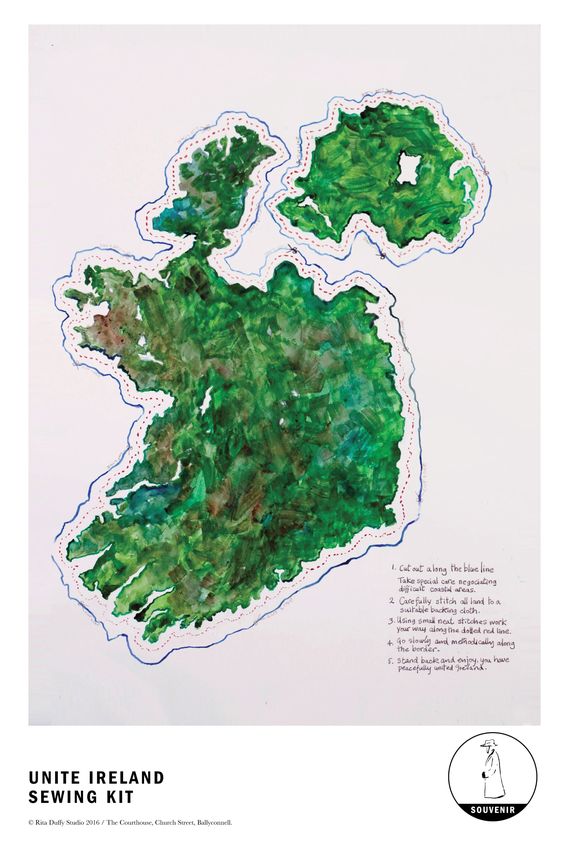
The editing team included Queen’s researcher Dr. Aisling Reid, who sourced, among other items, memoir extracts from politician and writer Cahir Healy, who was interned on the Argenta prison ship in Belfast Lough from 1922 – 1924, for his anti-partitionist activities.
“Ireland’s Border Culture project aims to document the richness and variety of references to the border and understand partition’s effect on a unique kind of cultural productivity.
“The selected examples illuminate Ireland’s ‘cultural borderscape’ and represent the border as an imaginative and creatively productive space,” Professor Eve Patten, the Trinity-lead of the project, explained.
Patten went on to explain that the plan was to develop and expand this growing resource with the inclusion of more writing from new immigrant communities in the border areas in the future. “The research team is keen to see how different users will respond to the material and suggest future inclusions,” she said.
Dr. Garrett Carr, Seamus Heaney Centre, Queen’s University Belfast, added: “We hope this resource will be used by teachers, students, cultural historians and policy-makers, and members of the public at home and abroad who are interested in Ireland’s border experience.”
Trinity’s Arts and Humanities Research Festival, is a week-long program of free talks and screenings spotlighting the work being undertaken by the university’s arts and humanities researchers.
Visit the website here.
Kindred Spirits & Eternal Hearts
A permanent memorial has been unveiled in the U.S. honoring the links between Ireland and the Choctaw nation.
The Eternal Heart sculpture was installed at the Choctaw Capitol Grounds in Oklahoma in late August.
Created by Choctaw Nation tribal member Samuel Stitt, the eight-foot structure features a Celtic trinity shape intertwined with a heart. The sculpture is placed so that it faces in the direction of Ireland.
The memorial, a joint commission funded by the Irish Government and the Chahta Foundation, is designed to honor the historic links between the two nations.
In 1847, the Choctaw raised over $170 – the equivalent to $5,000 today – to support the Irish people during the Great Hunger.
The tribe had only recently endured its own “trail of tears,” the name given to a series of forced relocations of many Native American tribes from their ancestral homes between 1830 and 1850.
More than a century later, the friendship was rekindled when, in 1995, then-Irish President Mary Robinson visited the Choctaw Nation to express the Irish nation’s gratitude for their gift.
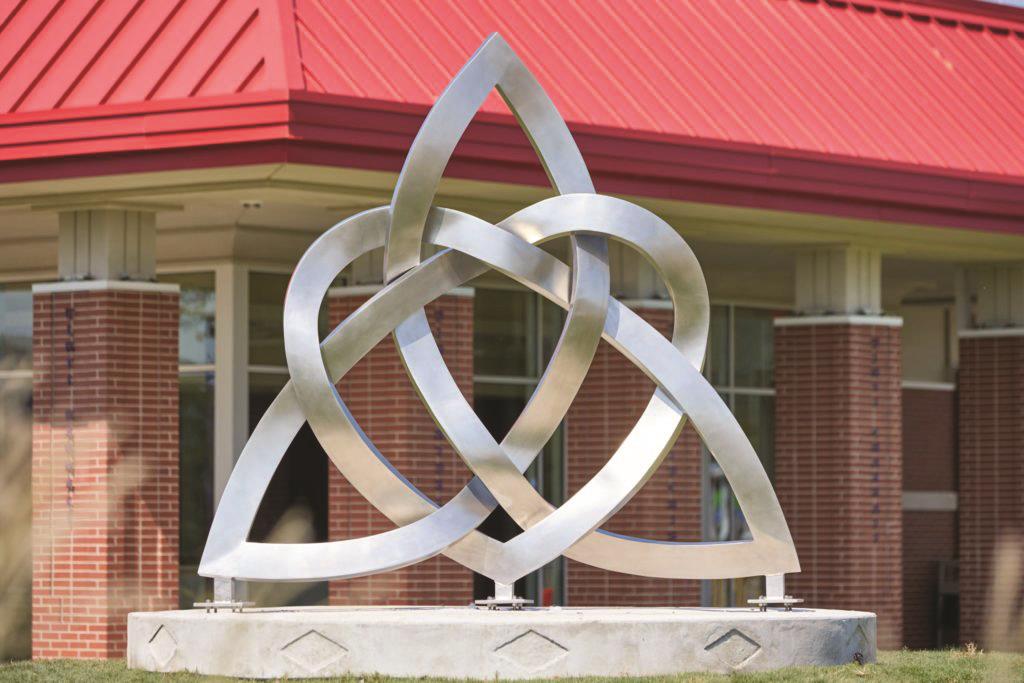
The visit, in which President Robinson was appointed an Honorary Chief of the Choctaw Nation, sparked a renewed commitment between both nations to honor the bond forged by the Choctaws’ selfless act.
In 2017, a Kindred Spirits sculpture, designed by Irish artist Alex Pentek, was erected in Midleton, Co. Cork, in honor of that bond.
In 2018, former Taoiseach (Irish Prime Minister) Leo Varadkar announced a scholarship for Choctaw students to study in Ireland. In 2020, during the COVID-19 pandemic, the Irish people demonstrated their support by providing €2 million in aid to Native Americans severely affected by the crisis.
Speaking at the unveiling event at Choctaw Capitol Grounds in Tuskahoma, Oklahoma, on August 30, 2024, Ireland’s Minister of State Thomas Byrne said the memorial would be “a permanent symbol of the enduring and meaningful friendship between our two nations, and a relationship which began with an act of solidarity and extraordinary generosity during the darkest years of the Great Irish Famine.”
Choctaw Nation Chief Gary Batton described the new sculpture as symbolic of “an eternal bond” and said that the Choctaw Nation is “extremely proud to call the people of Ireland our friends and kindred spirits.”
– Fiona Audley /The Irish Post
Windy City Mystery Solved?
The good news is that Mrs. O’Leary and her cursed cow may finally have been exonerated.
The bad news: Another Irish immigrant is in trouble.
New research on the Chicago Fire of 1871 suggests that someone in the city’s bustling Irish community started the calamity that transformed the Windy City.
Just not the Irish woman and her farm animal who has been blamed for 150 years.
“If you know anything about the fire, you probably have a vague recollection that a cow was involved,” a recent New Yorker magazine article noted. “Didn’t it kick something over? A lantern, maybe? And wasn’t it somehow Mrs. O’Leary’s fault, whoever she was? But none of that is true.”
Scott W. Berg’s recent book The Burning World has prompted Reassessments of the Chicago blaze.
The terrible fire began in early October 1871 on the West Side of the growing city filled with immigrants.
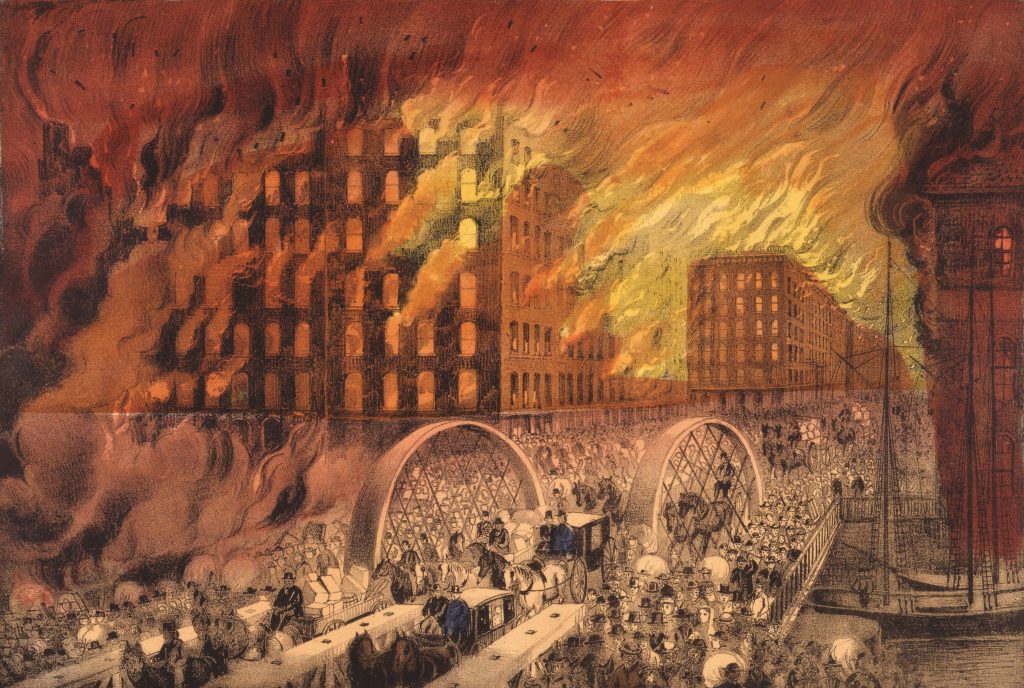
One of the residents of DeKoven Street was Patrick Leary, “a laborer who had served in the Union Army after emigrating from County Kerry, Ireland, and his wife, Catherine, who kept a dairy barn and cows and peddled the milk, had five children, between the ages of one and fifteen,” the New Yorker notes, adding: “Sources often render the family’s name as O’Leary, but Berg suggests that Catherine usually went by Leary, without the O.”
The Learys, it turns out, rented out a home next to their own. It was occupied by another Irish family, the McLaughlins, who seemed to have been “hosting a welcome party, complete with music, for a newly arrived Irish relative” when the fire broke out, according to the New Yorker.
Mrs. O’Leary was reportedly in bed very early and later pointed to her early-morning cow-milking habits as proof that nothing dangerous could have happened in her barn late at night.
However, author Scott W. Berg and others have come to believe that another Irish neighbor, Daniel Sullivan – who liked to duck into the Learys’ barn to puff on his pipe – likely started the fire by accident.
Mullany, Hague Exhibits
Two very different Irish Americans are the focus of new museum exhibits.
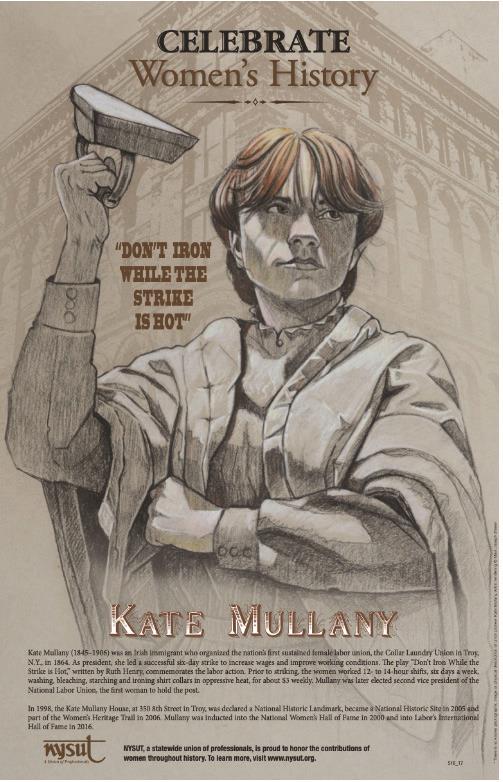
In upstate New York, the Kate Mullany House National Historic Site in Troy has reopened after renovations and repairs were needed after a November 2021 auto collision that caused $150,000 in damages.
“It’s all been restored. All of the damage from the accident has repaired. We’ve updated the exhibit area extensively,” Paul Cole was quoted as saying. Cole is executive director of the American Labor Studies Center, which is based at the same Eighth Street house as the Mullany Center.
Mullany was an influential 19th-century Irish American labor leader, especially among immigrant female workers, who factory owners easily
exploited. Born in England to Irish parents, the family immigrated to New York City in 1850 and eventually traveled 150 miles upriver to Troy in search of work. Not long after, Kate’s father died. Her mother was in poor health, so Kate was required to be the family’s breadwinner by working at one of the commercial laundries. During the frigid month of February in 1864, she and her co-worker Esther Keegan led a weeklong strike that resulted in a 25-percent wage increase and improved working conditions. A second strike brought wages to $14 a week, which allowed Mullany to buy the house on Eight Street for her family and help cover costs by renting out rooms to other workers.
You can learn more and donate to the cause at katemullanynhs.org.
Meanwhile, the Jersey City Museum has opened a new exhibit about Irish American political boss Frank Hague. Hague, a son of Irish immigrants from Co. Cavan, was both a law-breaking scoundrel and enormously popular. Expelled from school at age 14 for poor attendance and unruly behavior, he trained at a local gym; initially intending to be a boxer, he ended up managing another young prize-fighter. He soon caught the eye of one of the local ward bosses and so began his foray into politics. His “tenure as mayor – spanning three decades (1917-1947) – saw profound and lasting changes to Jersey City’s physical landscape, political culture, transportation sector, and entertainment culture,” museum officials noted, adding: “As democratic norms were challenged, innovations in health care and education profoundly impacted the lives of thousands.” Mayor Hague also had a reputation for corruption and has been called “the granddaddy of Jersey bosses.”
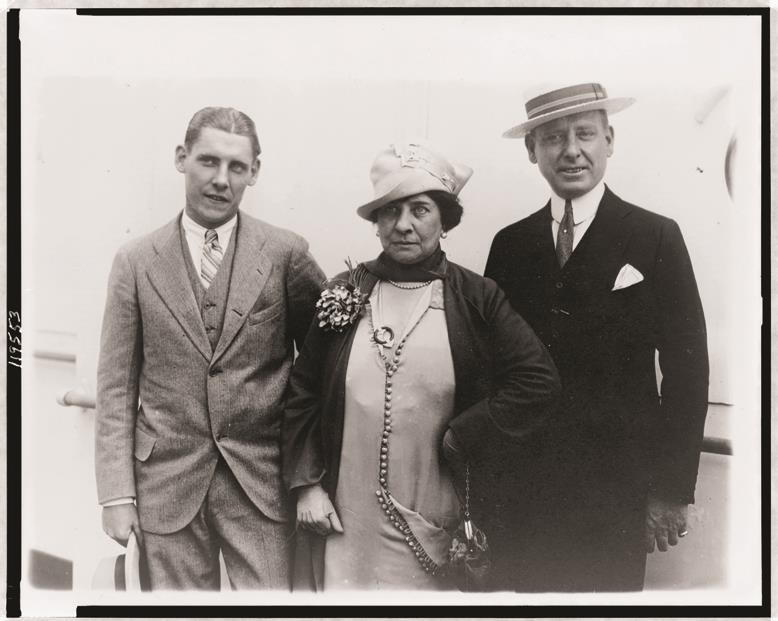
His political machine, known as the “organization,” controlled politics on local and state levels and influenced presidential campaigns. His wealth at the time of his death was estimated at over $10 million, although his City salary never exceeded $8,500 per year.
The USS Patrick Gallagher
Officials from Ireland and the U.S. met in Maine to christen a ship named for an Irish immigrant on July 27. Minister of State for International Development and Diaspora, Seán Fleming, TD made the keynote address at the christening of the USS Patrick Gallagher. The newly constructed naval ship is named after the late corporal who died in 1967 while serving in the Vietnam War. Originally from Derrintogher, Mayo, Gallagher emigrated to New York in 1962. Corporal Gallagher’s sisters, Teresa, Rosemarie, and Pauline, also attended the ceremony.
The U.S.S. Gallagher honors not only the life and service of Cpl. Gallagher but also 21 other Irish immigrants whose names are inscribed on the Vietnam War Memorial.

Hail Mary Murphy
Longtime New York City T.V. news anchor Mary Murphy has retired after four decades of reporting on Gotham’s mean streets.
“With an unyielding dedication to journalism in her hometown, Mary’s departure marks the end of an era at PIX11, where she was the recipient of 30 Emmy Awards,” station officials said.
Murphy is the oldest of four children born to Irish immigrants who settled in Woodside, Queens. Her Mayo-born father, James, was a city bus driver, while her mother (also Mary) was a waitress originally from Galway.
Station officials added that from the moment she stepped in front of the camera in 1983, Murphy became “synonymous with criminal justice and investigative reporting” and was on hand for some of New York’s most unforgettable moments.
One of the first came in 1985, outside of Manhattan’s Sparks Steakhouse, where Gambino crime boss Paul Castellano was killed. In 1994, Murphy interviewed Long Island Railroad gunman Colin Ferguson and also covered a U.S. visit from Pope John Paul II while she was six months pregnant.
Murphy also delivered some of the most poignant reports to come out of the TWA Flight 800 crash and the September 11 terror attacks.
She was also at the Vatican for the elevation of New York Archbishop Timothy Dolan to Cardinal in 2012, and the selection of Pope Francis in 2013.
Aubrey “Steps” Up
She has starred in popular T.V. shows and gritty indie movies.
And actress Aubrey Plaza owes it all to Irish Step Dancing.
She has told several T.V. show hosts and interviewers about this very secret weapon
“One thing that you don’t know – or that a lot of people don’t know about me – is that I know how to Irish dance. I took Irish dancing lessons as a child, and I competed,” she told the Dinner Party Download podcast.
“I’m half Puerto Rican and half Irish, but I grew up with my foster grandparents, who are very Irish. Their kids all had to go to Irish dancing lessons, so I was thrown in with that bunch. And I was the only dark-haired, ‘spicy’ Irish dancer.”
Sounds like a “Lord of the Dance” sequel is ready to go.
Erin’s Top “Style”
Irish American Erin Walsh has become Hollywood’s go-to “superstylist.”

Just ask A-lister Anne Hathaway.
Hathaway has been a star for two decades, “but her red carpet appearances haven’t always hit the spot,” The Financial Times noted recently.
And yet, at the recent Council of Fashion Designers Awards – “an annual ceremony that honors the best of American fashion” – the Academy Award-winning star of Dark Knight Rises and Les Miserables “stepped onto the red carpet wearing the most American of looks: a double denim corset and skirt designed by Ralph Lauren, worn with Bulgari jewels. The look was a crowning moment of Hathaway’s recent fashion resurgence, and celebrity stylist and fashion editor Erin Walsh orchestrated it.”
These days, stars like Hathaway, Selena Gomez, Sarah Jessica Parker, Kerry Washington, and Ashley Park all call for Walsh when they want to look their best.
Born in Florida, Walsh attended NYU and studied drama, but she became a major player in fashion after moving to L.A.
In 2023, The Hollywood Reporter named Walsh one of Hollywood’s 25 most powerful stylists.
Football Stars Come and Go
As one Irish American soccer great retires, the future of Irish American soccer has arrived.

Sinead Farrelly spent the last two decades playing internationally for the U.S. and Ireland. The Pennsylvania native – whose father was born in Dublin – also had a brilliant career with National Women’s League teams in Philadelphia, New York, and Boston.
At the age of 34, Farrelly announced her retirement earlier this year.
At the same time, phenom Cavan Sullivan made his professional debut – at the age of 14.
“The midfielder made history, becoming the youngest player to make his regular-season debut among the top North American professional sports leagues (MLB, MLS, NBA, NFL, NHL, NWSL, and WNBA) at 14 years and 293 days old,” CNN reported. “Freddy Adu previously held the mark as the youngest player to debut in the MLS, and he made his debut for D.C. United in 2004 at 14 years and 306 days old.”
Sullivan comes from a big Irish Philadelphia sports family on his father’s side, and he is of German-Bangladeshi descent through his mother.
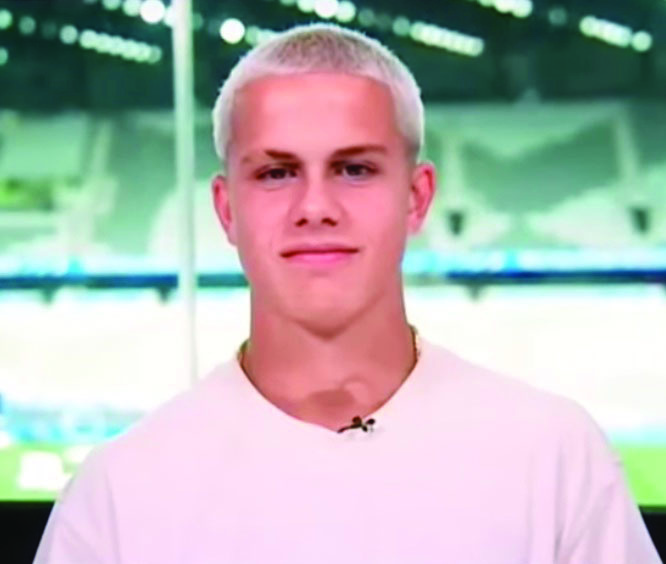
His older twin brothers, Declan and Ronan, are also highly regarded athletes, while his eldest brother, Quinn, plays for the Philadelphia Union pro soccer team.
Family patriarch Brendan has said: “I grew up in a soccer neighborhood where everybody played soccer…in these small pockets of immigrants, you get it, and so Scotch, Irish, German, Italian, Polish folks all lived in a three neighborhood cluster” in north Philly,” he told the Backheeled web site.
Meanwhile, Gaelic football players are making a name for themselves in the NFL.
Charlie Smyth, from Newry, who played goalkeeper for Down GAA, signed with the New Orleans Saints in 2024. Smyth, 22, made his NFL debut with a game-winning 37-yard field goal in the Saints’ preseason opener against the Cardinals. And Packers punter Daniel Whelan is already a second-year pro. The Wicklow native moved to California at age 13 and played college football for UC Davis before signing with the Packers.
DNA Passport
A University of Virginia professor was granted an Irish passport after a surprise DNA test revealed he was genetically 100 percent Irish. “Apparently, in my case and for the first time, Ireland decided to accept DNA evidence as proof of Irish blood instead of birth certificates,” John Portmann told the Irish Times. Portmann was cared for by nuns in Phoenix, Arizona, and was later adopted knowing nothing about his birth mother and father, who turned out to be from Dublin and Kilkenny.
The Irish Department of Foreign Affairs told the Times it does not comment on individual cases but said others have also tried to obtain Irish citizenship through DNA. It was not clear if the attempts were successful.
Cardinal O’Malley Retires
O’Malley, a close ally of Pope Francis, is credited with guiding Boston Catholics in the wake of horrific sex abuse revelations.
As O’Malley leaves, Catholics are divided over how – or if – the church should help migrants.
O’Malley compared the current situation to the days of mass Irish immigration.
“It must have felt like an invasion,” O’Malley said. “But I’d like to think we’ve contributed to society. And we need a system now that deals with immigrants and does it in a way that is humane and fair and avoids this chaos at the borders.”
Archbishop-elect Richard Henning – O’Malley’s replacement – has vowed to begin his term by listening to the faithful.

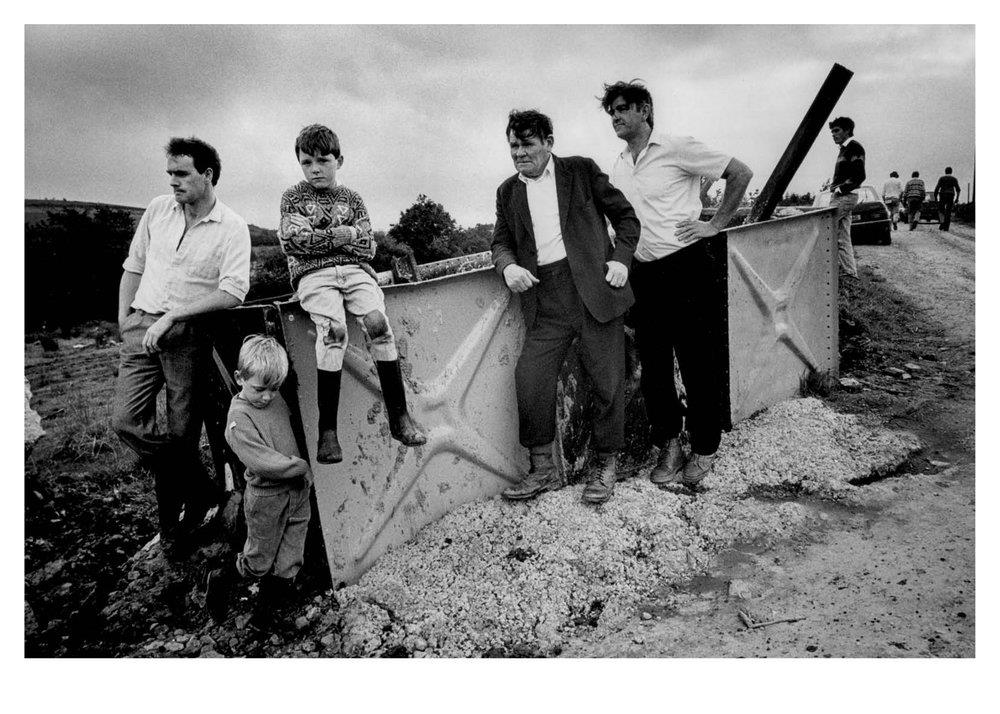


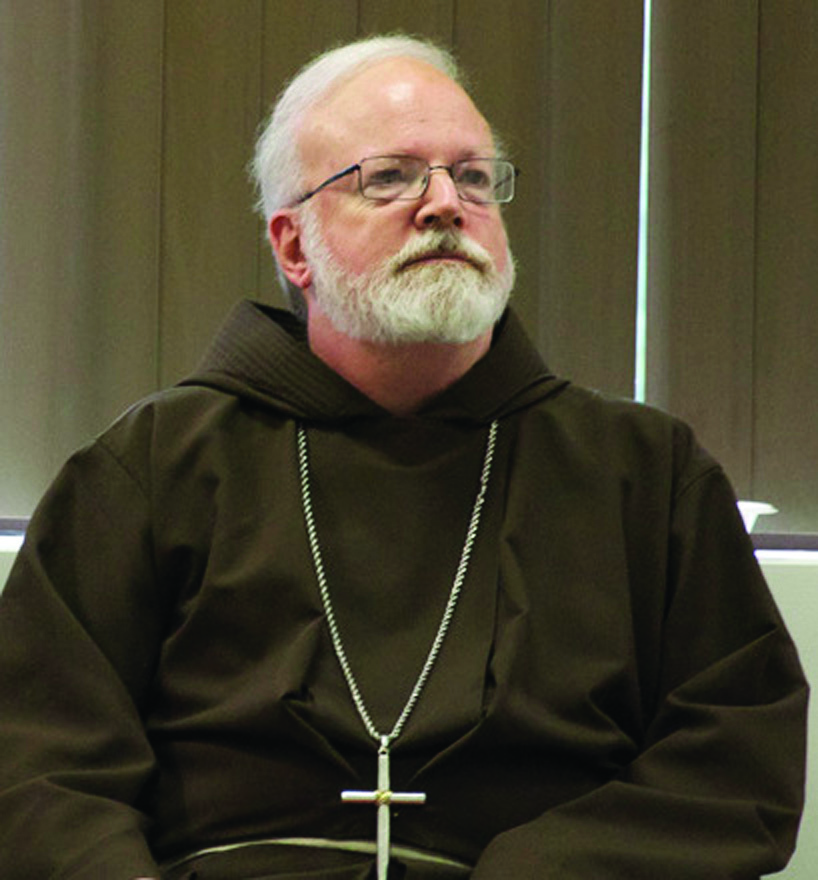
Leave a Reply